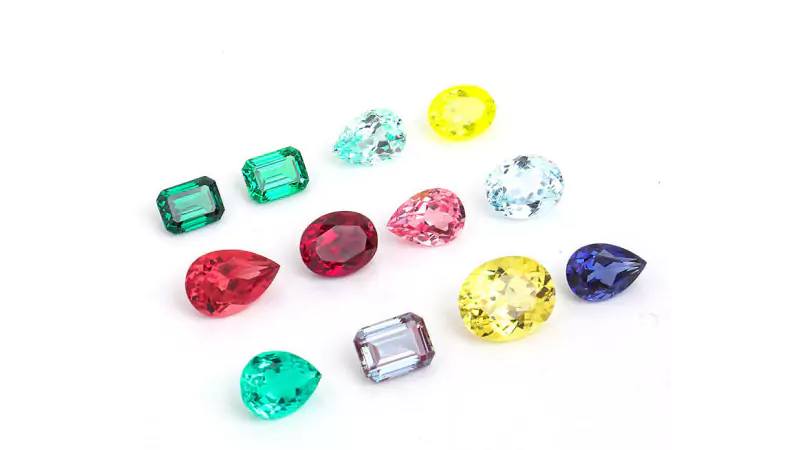The gemstone industry is experiencing a surge in demand, with the market growing rapidly over the past few years. While diamonds have long been the most popular gemstone, there is now a growing interest in other types of gemstones, mostly colored stones, which are becoming increasingly popular among consumers.
Let us dive deep into gemstones market trends to understand the direction of its tides.
Rise of E-commerce
Another factor that is driving the growth of the gemstone industry is the rise of e-commerce. With the increasing popularity of online shopping, more and more consumers are turning to the internet to purchase gemstones. This has led to a boom in online gemstone retailers, many of which offer a wide selection of gems at competitive prices.
Lab-Grown Gemstones
In addition to ethical sourcing and e-commerce, there are several other emerging trends in the gemstone industry. One such trend is the increasing popularity of lab-grown gemstones. These gems are created in a laboratory using advanced technology and a controlled environment. This allows the creation of high-quality gems that are virtually identical to natural gems.

Lab-grown gemstones are becoming increasingly popular among consumers, as they are often more affordable and more environmentally friendly than their natural counterparts. They are also free from the ethical concerns associated with the mining of natural gems.
Innovative Cuts and Designs
Another emerging trend in the gemstone industry is the use of technology to create new and innovative cuts and designs. With advances in computer-aided design and manufacturing, gemstone cutters and designers are now able to create intricate and unique gemstone designs that were once impossible to achieve.
This trend is particularly evident in the growing popularity of fancy-shaped gemstones, which include non-traditional cuts such as trillions, bullets, and hexagons. These cuts offer a fresh and modern take on traditional gemstone shapes and are becoming increasingly popular among younger consumers.
Ethical Sourcing
One of the main reasons for the rise in demand for colored gemstones is the growing interest in sustainable and ethical sourcing. Consumers are becoming more aware of the impact of their purchasing decisions and are looking for products that are responsibly sourced with a minimal impact on the environment. As a result, many gemstone companies are now focusing on ethical sourcing and are using more sustainable and eco-friendly methods of extraction.
Ethical sourcing of gemstones is mostly a result of the use of blockchain technology. This technology is also a remarkable transformation in the gemstone industry. Let us understand blockchain technology.
Blockchain Meaning
Blockchain is a distributed ledger technology that allows for the secure and transparent recording of transactions. It allows for the creation of permanent, tamper-proof records that can be accessed by anyone with the necessary permissions. This technology is particularly well-suited for the gemstone industry, which has long struggled with issues related to sourcing, traceability, and certification.
Why is it Required?
One of the main challenges facing the gemstone industry is the issue of conflict minerals. Many gemstones, particularly diamonds, are sourced from regions of the world that are plagued by conflict and human rights abuses. This has led to concerns about the ethical and environmental impact of gemstone mining, as well as the possibility that diamonds and other gems may be used to finance conflicts or other illegal activities.
Transparency and certifications are the two main attributes of blockchain technology.
Transparency
Blockchain technology can help address these concerns by providing a transparent and immutable record of the journey of a gemstone from mine to market. By creating a blockchain-based system for tracking and tracing gemstones, it is possible to ensure that each stone is ethically sourced and free from conflict. This can help build consumer confidence and trust in the industry, as well as reduce the risk of fraud and deception.
Certification
In addition to improving traceability and transparency, blockchain technology can also help with certification and authentication. Gemstones are often certified by independent third-party organizations, which provide assurance that the stone is of a certain quality and has been ethically sourced. However, these certifications can be difficult to verify and may not be universally recognized.
By using blockchain technology to create a decentralized system for certification and authentication, it is possible to create a more reliable and trustworthy system for verifying the quality and authenticity of gemstones. This can help reduce the risk of fraud and deception, as well as increase consumer confidence in the industry.
Overall, the adoption of blockchain technology represents a major transformation in the gemstone industry. By improving traceability, transparency, and certification, blockchain is helping to address some of the key challenges the industry is facing. As the technology continues to develop and evolve, it is likely that we will see further innovation and transformation in the way gemstones are sourced, tracked, and certified.
In conclusion, the gemstone industry is experiencing a period of rapid growth, driven by a number of factors including ethical sourcing, e-commerce, and emerging trends such as lab-grown gemstones and innovative gemstone cuts. As consumers become more interested in sustainable and responsible purchasing, it is likely that the demand for ethically sourced gems will continue to grow. These days gemstones are not just symbols of luxury or adornments, they have become investment options. Invest your money wisely and always choose a genuine seller.